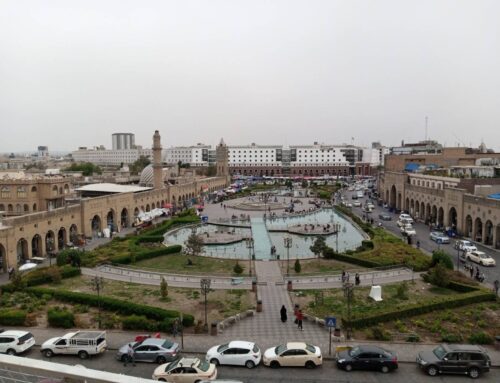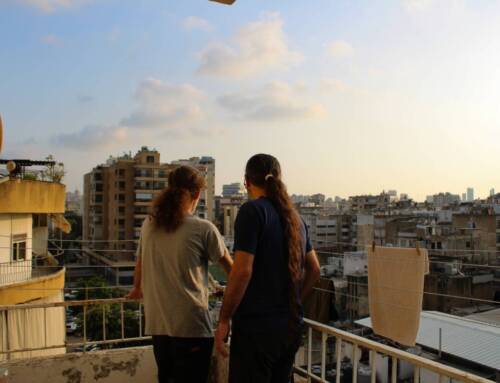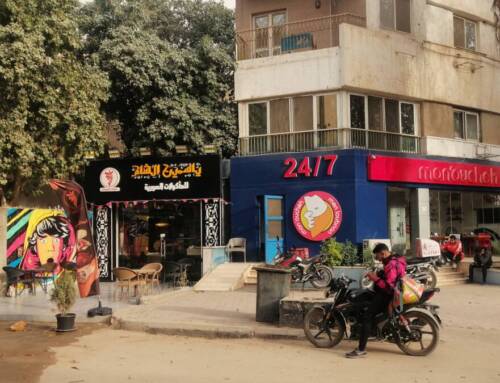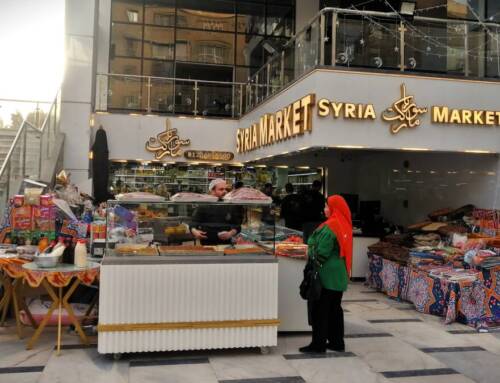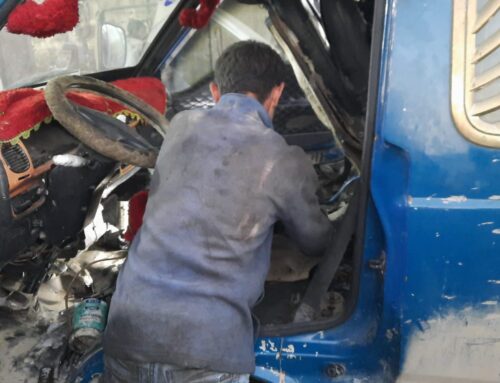The border crossings of Syria’s northwest
AMMAN: Much of the remaining rebel presence in Syria is […]
21 December 2017
AMMAN: Much of the remaining rebel presence in Syria is concentrated in two pockets of the county’s northwest, where small cities and countryside towns intersperse with sweeping tracts of farmland.
One of the pockets spans Idlib province and neighboring parts of Hama and Aleppo to the south and east. There, the hardline rebel coalition Hay’at Tahrir a-Sham is the dominant military and political force. To the northeast, in the northern Aleppo countryside, Turkish-backed Free Syrian Army factions rule a second pocket of territory after driving out the Islamic State in 2016.
Forces loyal to President Bashar al-Assad have driven out opposition fighters from most urban and industrial centers throughout the country, leaving rebels and the civil institutions that support them largely sequestered in the northwest and economically dependent on four commercial crossings that fall along Syria’s 950km border with Turkey.
For nearly three million residents of these two rebel-held enclaves, the commercial crossings with Turkey mean an influx of food, medicine, clothing, fuels and building supplies, among other goods. For the rebel factions, the crossings represent an economic opportunity.
By 2014, Turkish exports to Syria had returned to pre-war levels, totaling an estimated $1.8 billion that year, according to a 2017 report by the French Institute of International Relations, a Paris-based think tank. The large volume of commercial trade through rebel-held crossings means that factions and civil authorities can make thousands to tens of thousands of dollars per day charging customs duties of $100 to $200 per freight truck.
This potential for profit makes border zones flashpoints for rebel infighting in both Idlib province and the territories controlled by Turkish-backed FSA factions. In northwestern Syria’s largely agriculture-based economy, the revenue-accruing crossings are a prize for rebel factions.
The four border crossings in Syria’s rebel northwest—Bab al-Hawa, Bab a-Salama, a-Rai and Jarablus—not only sustain the rebel factions themselves, but also the civil and municipal institutions that lend them legitimacy in the region.
Bab al-Hawa border crossing, north Idlib province
As the sole commercial crossing for the province, home to an estimated two million residents, Bab al-Hawa is “the main lifeline for opposition-held territory in and around Idlib city,” Mazen Aloush, the head of the crossing’s media office, tells Syria Direct. The six other border crossings in Idlib province—including Khirbet al-Joz, Harem, Darkoush and Atma—are now either shuttered or authorized only for medical evacuations and the delivery of humanitarian aid.
Rebel militias aligned with the Free Syrian Army (FSA) first seized control of Bab al-Hawa from the Syrian government in mid-2012. The Syrian-Turkish border crossing sits roughly 35 kilometers north of Idlib city, connecting Idlib province with the city of Reyhanli in Turkey’s Hatay province. Then, in December 2013, the Islamic Front, a largely Salafist rebel coalition including Ahrar a-Sham and Jaish al-Islam, wrested control of the border crossing from FSA factions that had been operating it.
Ahrar a-Sham maintained control over Bab al-Hawa when the Islamic Front dissolved in 2015 and established a civilian administration for the border crossing in April of that year, Syria Direct reported at the time.
Ahrar a-Sham’s command over the border crossing went largely unchallenged for more than two years, until a wave of rebel infighting between Ahrar and rival rebel coalition Hay’at Tahrir a-Sham (HTS) engulfed Idlib province in July 2017. HTS is led by Jabhat Fatah a-Sham, formerly Al-Qaeda’s Syrian affiliate Jabhat a-Nusra. During the inter-rebel clashes, reportedly sparked by a dispute over a flag, HTS drove Ahrar a-Sham fighters from the Bab al-Hawa border crossing and nearby towns.
On July 26, the two warring factions reached an agreement and announced they would hand over the Bab al-Hawa crossing to a civilian administration so that the flow of humanitarian aid could resume. However, HTS retains control of the towns, villages and roads around the border crossing, leaving Bab al-Hawa ultimately under the hardline rebel group’s control.

Bab al-Hawa reopened for cross-border commercial deliveries on October 18, Syria Direct reported at the time, allowing food, building supplies and other good to enter rebel-held Idlib province for the first time in three months.
The role of the Syrian Salvation Government (SSG), an HTS-backed civil authority in Idlib province formed last month, in the administration of Bab al-Hawa is not immediately clear. On Wednesday, the SSG announced that all Iranian- and Russian- made goods would be barred from passing through the border crossing. The ban came just one day after the customs administration for Bab al-Hawa announced in a statement that it would allow Russian goods through the crossing in response to “numerous requests by merchants.”
Mazen Aloush, the head of the Bab al-Hawa media office, told Syria Direct this week that all revenue produced by the crossing goes directly to municipal organizations in Idlib province not affiliated with the SSG. Aloush emphasized that the current administration of the border crossing “is completely independent and not beholden to any military factions or entity.”
Officials charge customs duties on all commercial goods that pass through the Bab al-Hawa border crossing. Mazen Aloush told Syria Direct that he could not provide an estimate of average revenue from customs, but said that roughly 400 commercial vehicles cross Bab al-Hawa on any given day.
The Aleppo Project, a research initiative of Shattuck Center on Conflict at Central European University in Hungary, estimated that Bab al-Hawa earned roughly $25 million a year based on Turkish export statistics and average figures for customs duties at the border in a December 2016 report.
“With the revenue, we pay for operational costs and employee salaries,” spokesman Mazen Aloush told Syria Direct, “any excess is earmarked for municipal services and projects.”
**
Jarablus border crossing, north Aleppo province
Operation Euphrates Shield, a military offensive by Turkish-backed FSA factions, dislodged the Islamic State (IS) from the north Aleppo city of Jarablus in August 2016 after two and half years of IS rule. Three months later, Turkish border officials authorized the movement of commercial goods through a border crossing located a few kilometers north of the city.
An estimated 80 to 180 freight trucks pass through the Jarablus crossing each day. A civilian administration runs the Syrian side of the border and act as customs agents, while the FSA-affiliated Ninth Brigade Special Forces provide security.
Paving a road in preparation for opening of the a-Rai border crossing on December 8. Photo courtesy of the a-Rai City Council.
Customs on imported goods reap between $10,000 and $15,000 per day, Sergeant Anis Haji Yahyah, the crossing’s security director, told Syria Direct this week. The Jarablus City Council collects the revenue, which is then used to provide municipal services to Jarablus and al-Bab, among other rebel-held regions of northern Aleppo.
The Jarablus crossing operates independent of the other border points in northern Aleppo, says Yahyah. The National Coalition of Syrian Revolution and Opposition Forces announced in an October 25 statement that the border crossings in territory controlled by Euphrates Shield FSA groups “will be put under a unified management system operating under the SIG’s leadership.” No date for transfer has been set.
**
Bab a-Salama border crossing, north Aleppo province
The Bab a-Salama border crossing on the Syrian-Turkish border lies roughly five kilometers north of the city of Azaz. Northern rebel factions aligned with the Free Syrian Army first seized Bab a-Salama from government forces in 2012. The Islamic State took control of Azaz and the nearby border area from rebel forces at the end of 2013, but by early 2014, the local, FSA-aligned Northern Storm Brigade regained control of the city.
The Turkish-backed faction al-Jabha a-Shamiya eventually subsumed the Northern Storm Brigade and maintained control over the Bab a-Salama crossing until October 2017. Al-Jabha a-Shamiya then transferred control of the crossing to the Syrian Interim Government (SIG), citing a desire to strengthen the Turkey-based civil government and to put an end to any disputes over the crossing among north Aleppo’s opposition groups.
Bab al-Salama on October 10 following handover to Syrian Interim Government. Photo
courtesy of Syrian Interim Government.
The handover of the crossing was “an important step to improving the performance of the government,” said SIG president Riad Seif at an October 12 conference in the Turkish city of Gaziantep.
The Bab a-Salama crossing earns an estimated $1 million per month from customs and taxes on commercial goods, Al-Monitor reported on September 28.
Syria Direct contacted the media office for the Bab a-Salama border crossing this week for information on operations and revenue but did not receive a reply.
**
A-Rai border crossing, north Aleppo province
A-Rai, a city three kilometers south of the Syrian-Turkish border with northern Aleppo province, witnessed several major confrontations between FSA-aligned rebels and the Islamic State in recent years. FSA battalions first claimed control of the town in February 2014, but found themselves unable to repel an offensive on the city by IS—still known as the Islamic State of Iraq and the Levant at the time. FSA brigades launched three ultimately unsuccessful attempts to reclaim the border city before finally taking and maintaining control of a-Rai in August 2016 with the support of the Turkish Armed Forces.
As of December 2017, a-Rai is the latest commercial border crossing to open in Syria’s northern, rebel-held territories. “Over the past three months, the a-Rai City Council has equipped the Syrian side [of the crossing] with lights, walking paths and paved the road between the Turkish and Syrian side,” a local opposition official told Syria Direct this week.
The developments to the Syrian side of the border came as the a-Rai City Council petitioned Turkish authorities to greenlight the passage of commercial goods through the crossing, said Alaa Hamad, the head of media relations for the a-Rai City Council.

In conjunction with the renovation of the crossing, members of the city council met with Turkish officials, including the deputy governor of the neighboring Turkish Kilis province to coordinate the reclassification of a-Rai as a commercial crossing. The purpose of opening a-Rai to commercial goods, says Hamad, is “to economically revitalize the area and develop civilian life in the region.”
The a-Rai City Council is in the process of transferring control over the eponymous border crossing to the Syrian Interim Government in accord with the October 25 announcement by the National Coalition of Syrian Revolution and Opposition Forces. The city council is still finalizing terms for how revenues should be distributed between local councils and municipal authorities in north Aleppo province, says Hamad.
The Turkish-backed, FSA-aligned Sultan Murad Division currently provides security support at the a-Rai border crossing.
Additional reporting by Ala’a Mekawe
This report is part of Syria’s month-long coverage of northwestern Syria in partnership with the Konrad Adenauer Foundation and reporters on the ground in Syria. Read our primer here.






